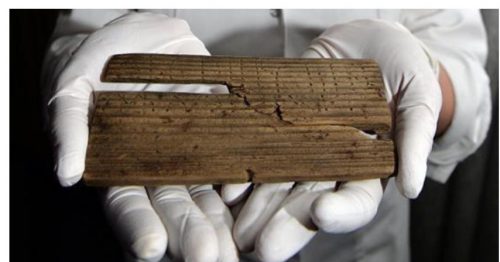Is handwriting a dying art or Is there still a place for the humble handwritten letter?
The wooden tablet in the Telegraph News picture below with its brief handwritten message has lasted for almost 2000 years. Do you think a modern typed message would survive that long?
 Unfortunately handwriting has received a hard rap in recent times. And although many educators agree that it promotes creativity, a large number of schools have demoted it. Only yesterday I read a report in the Global Times about some schools in Shanghai that are promoting paperless homework. Yet another silent death knell for handwriting?
Unfortunately handwriting has received a hard rap in recent times. And although many educators agree that it promotes creativity, a large number of schools have demoted it. Only yesterday I read a report in the Global Times about some schools in Shanghai that are promoting paperless homework. Yet another silent death knell for handwriting?
Typing or texting is so much quicker for many of us. But the problem with typing is that it’s rather lifeless and static. Which is why a typed love letter somehow misses the point. On the other hand, anyone with a bit of knowledge about handwriting knows that a handwritten letter teems with life.
A handwritten letter shows real emotion whether it is bursting with anger or overflowing with love. This is because handwriting reflects the life forces of an individual; it shows the emotions weaving through it.
Just take a look at a page of handwriting such as this one by Elizabeth Taylor which she wrote to her fiancée when she was only seventeen.

Letters that are fired up with feeling seem to bob up and down or move imperceptibly from side to side. Moods and emotions animate and vitalize the strokes that look like a field of wheat swaying in the wind.
Handwriting is not merely a tool for communicating. It’s a genuine form of expression that shows how you truly feel about something.
It’s about sending a personal message that has overtones of so much more than the actual contents of the letter. It shows all kinds of nuances that texting – even with those little emojis can never emulate.
But unfortunately as far as deeper communication is concerned, we are beginning to pay the price demanded by our reliance on technology.
And so my question is; should we dismiss handwriting as a dying art? Or should we maintain it as a living link that will continue to connect the past with the future?
Keep in touch with more articles like this with:







